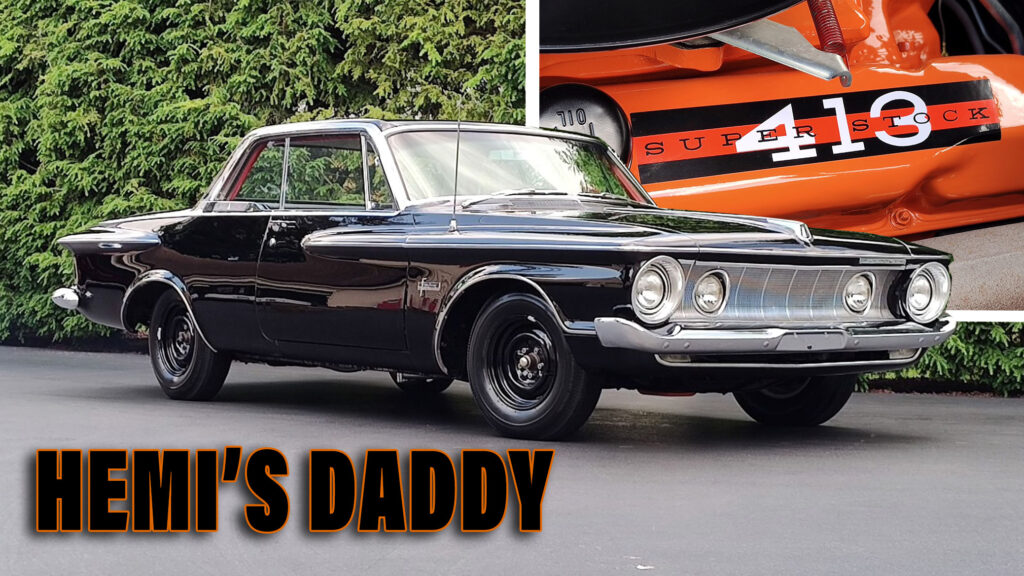Chrysler’s 426 Hemi is the corporation’s most famous engine of the classic muscle era, but it’s far from the only one. Before the Hemi became available for street duty in 1966 the top-performing engines offered in showroom Dodge and Plymouth cars were the wedge-head 413 and 426. And they looked every bit as weird as the cars they powered.
Weirdest and, let’s be honest here, ugliest of the Chrysler cars of that period were the 1962 models, which look like they do due to some brutal cost-cutting and a hilarious mix-up by Chrysler’s new boss. At a function, William Newberg had heard Chevrolet President Ed Cole talking about a “smaller Chevy” for ’62 and mistakenly thought GM was downsizing its full-size cars, when in fact Cole was referencing the new small Chevy II, a totally different model. Newberg ordered emergency redesigns on Dodge and Plymouth cars so they’d be shorter and ready to compete in the coming season.
The public hated the result and sales tanked, so any ’62 Plymouth Savoy, Belvedere, Fury, or Sport Fury is a relatively rare machine, but this particular Fury is rarer than most, being one of 57 equipped with the Super Stock package and 413 Max Wedge engine that year. The same dual-carb motor was known as the RamCharger 413 when fitted to a Dodge, generated a massive 410 hp (416 PS) on an 11.0:1 compression ratio and was such a tight fit under the hood that the exhausts headers had to be rooted upwards to give sufficient clearance.
Related: Legendary Plymouth Cuda 440 Rapid Transit Is A Real-Life Hot Wheels That Was Hidden For 50 Years
Not that you’d guess it was packing such serious firepower by looking at its plain steel wheels, anonymous black paint, bench-seat interior, and pushbutton automatic transmission. Early muscle cars were more focused on going fast than looking like they could go fast and buyers often ordered them with as few frills as possible so they’d be lighter and quicker on the drag strip.
The original owner of this car paid $615 for the Super Stock package, bringing his total spend to $3,693.60 back in 1962, which equates to around $37,200 in 2023 dollars. And by a curious coincidence that’s almost exactly how much an average condition car would be worth today, according to Hagerty’s valuation data, a testament to the ugliness of the styling and the fact that later muscle cars are simply far more collectible. This immaculate rotisserie-restored example, however, is sure to go for far more than $37k when it crosses the block at Mecum’s Harrisburg Sale later this month.






















